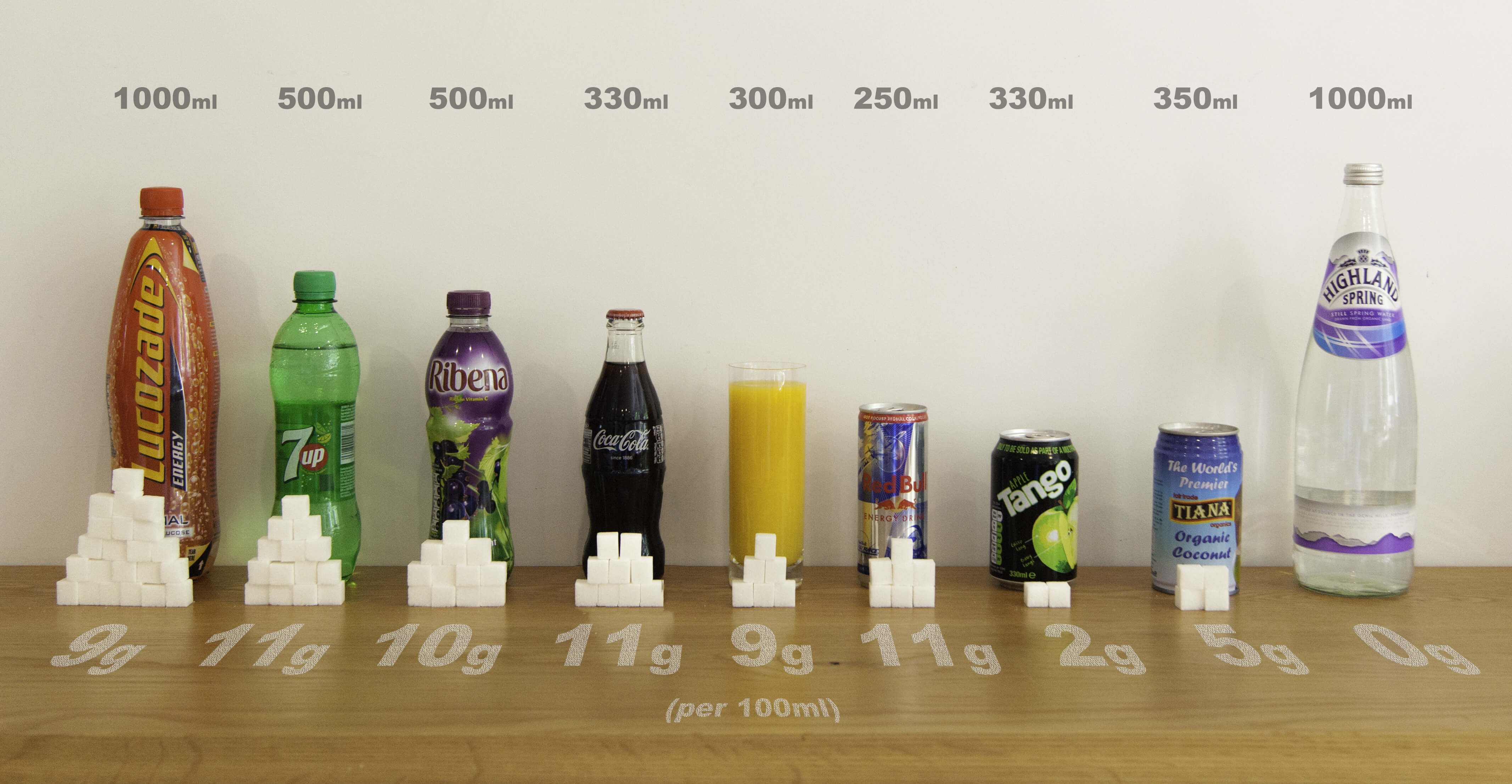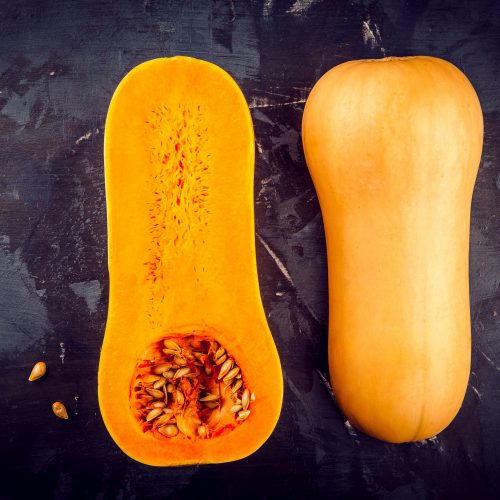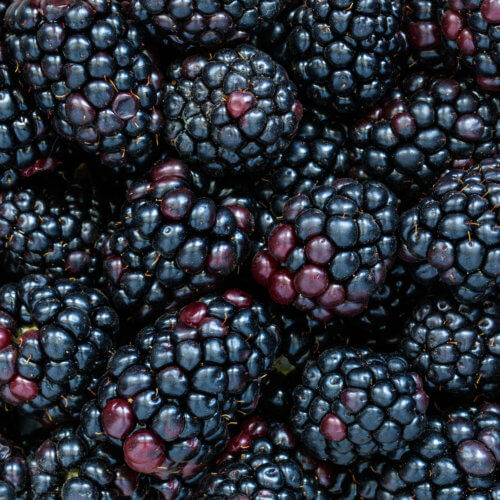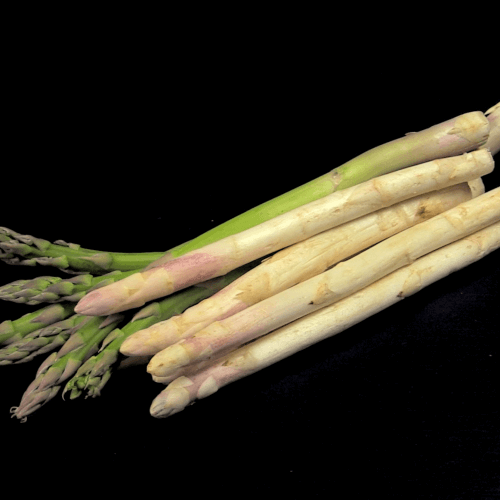This is a guest blog from the founder of SR Nutrition, consultancy directed by Registered Nutritionist Charlotte Stirling-Reed who has a wealth of experience working as a nutritionist in many sectors including the NHS, Commercial Companies, Local Authorities and Charities.
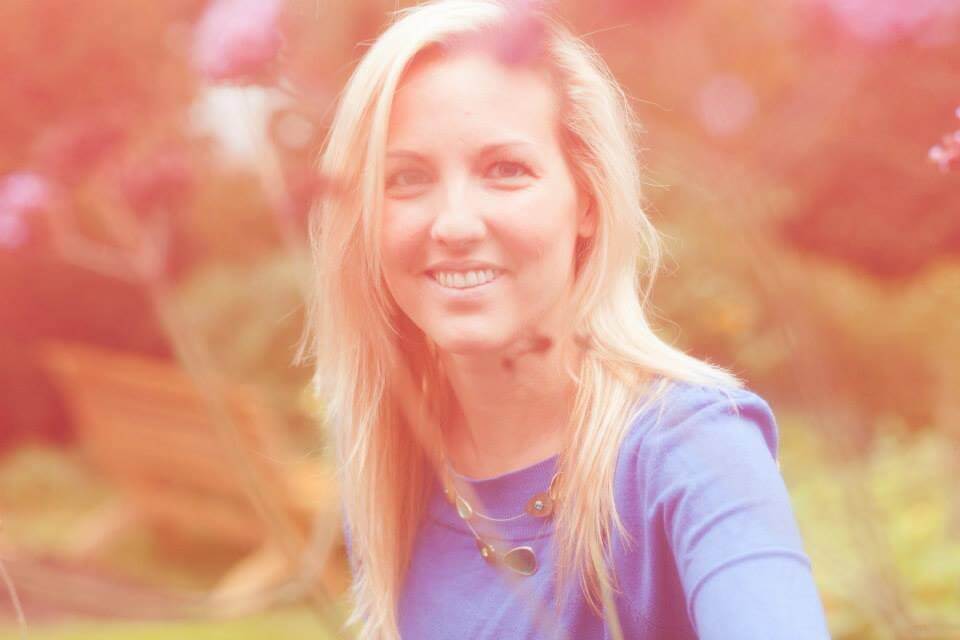 Sugar is the buzzword of the moment. You can’t seem to avoid it, whether it be on the TV, in the newspapers or on your social media networks. But what actually is sugar and why is it such a big deal?
Sugar is the buzzword of the moment. You can’t seem to avoid it, whether it be on the TV, in the newspapers or on your social media networks. But what actually is sugar and why is it such a big deal?
What is sugar?
In it’s simplest form, sugar is made up of monosaccharides – glucose, fructose and galactose. Other sugars are called disaccahrides and are formed of two monosaccharide molecules joined together. These include: sucrose, otherwise known as table sugar, (made up of glucose and fructose molecules), lactose (glucose and galactose) and maltose (glucose and glucose). When sugar molecules are joined together to form more than two units they become oligosaccharides (3-10 sugar molecules) and polysaccharides (such as starch, pectin and fibre).
What about “natural” sugar?
Actually ALL sugars are extracted from naturally occurring sources. For example, glucose and fructose come from honey and fruit, lactose comes from milk and sucrose (table sugar) is produced by the crystallization of the syrup from sugar cane and sugar beet plants. When people refer to ‘natural’ sugars it’s easy to see how this can be confusing and misleading for the public. Generally ‘natural sugars’ are though of as the sugars that are composite in the structure of a food, e.g. those found in fruits and vegetables. ‘Free sugars’ on the other hand are those sugars that are ADDED to foods by the manufacturer or an individual to increase the sweetness; including honey, syrups and fruit juices.
Affect on blood sugars?
After a meal our blood sugar levels usually rise in response to the food we have eaten, which is broken down into glucose and released into our blood stream. This leads to an increase in insulin which encourages the cells to take up the glucose from the blood.
Glucose has the biggest effect on our blood sugars and is the standard by which blood sugar response is measured (the Glycemic Index (GI) of a food) and therefore has a GI level of 100. In comparison, fructose has a very low GI as it doesn’t have much of an affect on our blood sugar or insulin levels. Sucrose (containing both glucose and fructose) has a medium GI level, at around 60. Therefore the myth that all sugars are high GI is also not correct.
Recommendations for sugar intake?
The Government body – The Scientific Advisory Committee on Nutrition (SACN) – has recently recommended that in the UK our ‘free sugar’ intake should be no more than 5% of our total calorie intake.
Free sugars are defined as: ‘those sugars added to food or those naturally present in honey, syrups and unsweetened fruit juices, but exclude lactose in milk and milk products.’ (SACN, 2015)
What does 5% of calories look like?
5% of calories from sugar means that the average female should be getting no more that 100kcals a day from ‘free’ or added sugars. This is equivalent too around 25g of sugar or just 6 teaspoons. For men, it is similar, at no more than around 125kcals a day, which equates to 31g sugar and around 7.5 teaspoons.
So how much are we eating now?
Recent research suggests that on average adults in the UK are consuming around a kilo of sugar every couple of weeks. Our rolling National Diet and Nutrition Survey has also shown how we are failing to meet the new (and even the old) recommendations for maximum sugar intake (see table below).
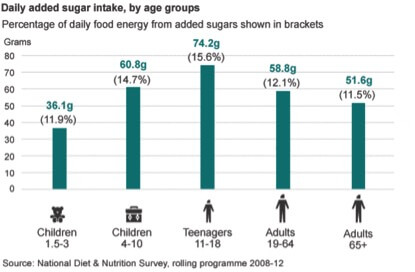
Why should we limit sugar?
We’ve known for a long time that sugar, especially frequent or regular intakes of sugar, can have a negative effect on tooth health and result in a greater risk of tooth decay. This is especially important for young children where we have recently seen a rise in dental problems. Additionally, excess calories in the form of sugar can lead to weight gain and obesity. One of the biggest problems we face in the UK are the calories and sugar we ingest in the form of ‘sugar sweetened beverages’ – soft and fizzy drinks to you and me. These drinks have been shown to increase BMI (weight) and also increase the risk of type 2 Diabetes.
How should we cut down?
Cutting down on sugar can be challenging – especially if you find yourself with a really sweet tooth! For some people making small changes, such as gradually reducing the sugar you add to foods is the best way to go about reducing your intake. For others going ‘cold turkey’ and making big changes all at once is a more effective method.
For anyone trying to make changes, here are some of my top tips:
- Swap sugary cereals for dried fruit or frozen berries to give your porridge more flavour
- Reduce sugar in tea really slowly – ½ a teaspoon at a time, to give your taste buds time to adapt
- Reduce your intake of sugary drinks by swapping for water or try making your own infused waters
- Try and opt for fruits as desserts or treats such as dried fruit or fresh fruit with yoghurt – these make a great treat and still give a nice sweet taste
- Read food labels and check the back of food packets – check for “no added sugar” on labels or that the 100g column on the back of the packet is 5 grams and under for sugar.
- Remember that honey, fruit juice and syrups also count as free sugars and need to be kept to a minimum
- Don’t completely restrict – remember that you will have good and bad days and that if there are foods you enjoy, make sure you allow yourself times to still enjoy them
Check out Charlotte’s website here for more information and advice.
To better understand the sugar content in the fizzy drink, we have a visual representation
